The Scottish Emigration Database
Methodology
The
research
project had a two-year timeframe. The first eighteen months
were
spent in digitising the source documents and compiling the relational
database, with the final six months being devoted to
analysis. In
view of the huge volume of archival material, it was decided to select
records at ten-year intervals, rather than attempt comprehensive
coverage. These snapshots were to include the first year that
full records become available (1890), the upsurge in external migration
just before the First World War (1910), the resurgence of the movement
after the war (1920), the nadir of the depression (1930) and the period
after World War II when air travel was beginning to take over from
ocean passage (1960). It was subsequently decided to add 1923
to
the sample, owing to its particular significance for Scottish
emigration.
The physical process of digitisation took place at The National
Archives in Kew (London). The source documents were passenger
lists (sometimes referred to as passenger manifests) completed by the
pursers of shipping companies that conveyed passengers to ports outside
Europe and the Mediterranean between 1890 and 1960. Using a Finepix
S602 camera, each page was photographed twice, generating over 6,000
digital images, which were subsequently stored on DVD.
|
| Owing to the size of the documents, the largest of which are 59cm by 42cm in size (for single pages) or 59cm by 84cm (for double pages), some of the first years sampled (1910 and 1930) were photographed in two separate
halves, as shown. |
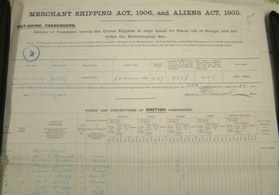
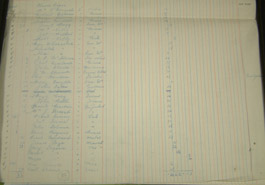 |
|
| Since these images were of relatively poor quality, The National Archives granted permission for the use of a tripod, enabling single-shot images to be taken. Despite the slight distortion of the original images by
the camera’s auto focus and the angle resulting from the use of the tripod from the side (and not above the original document), the quality was greatly enhanced, as shown by this image. |
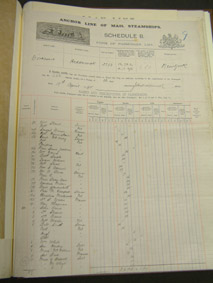 |
|
The
volume and scope of information in the
shipping manifests changed considerably during the seventy years
covered by the study and the database was designed to take account of
these changes. As the British state became increasingly
interested in studying patterns of population movement in and out of
Britain’s ports (along with Irish ports prior to 1922), so
the
documentation steadily evolved.
Initially only the name, age, gender, occupation and nationality were
sought, but by 1900 (earlier in certain instances) some companies had
begun to record the province and/or town of destination of emigrant
passengers, particularly to Canada. |
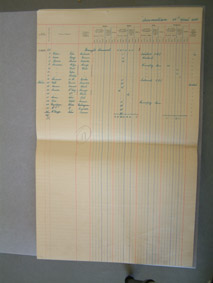 |
|
| Following the 1905
Aliens Act, enforced through the 1906 Merchant Shipping Act, more
details were recorded on the foreign-born non-transmigrants
(foreign-born emigrants who had lived in Britain but who had not become
naturalised British subjects) and transmigrants (those who arrived and
re-migrated from Britain within 14 days of arrival). In
particular they recorded the names of companies which had transported
the transmigrants to Britain, the passengers’ specific
nationalities and the British point of entry. After 1908
returns
for Glasgow were unique in recording the race as well as the
nationality of foreign-born passengers. For example, Russian
passengers might be entered as Russia and Jewish, or Russian and
Slav. |
 |
|
| From April 1912 the
manifests included much more detailed demographic information,
including the place of intended settlement (18 months or longer) and
from 1919 a full previous address was entered. |
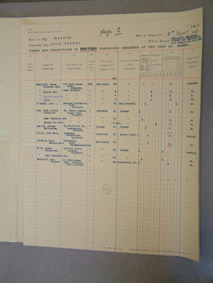 |
|
| The
advent of mass air transportation
after World War II led to the introduction of passenger boarding
cards. Although shipping manifests continued to record
seaborne
passengers, additional passenger boarding cards have survived for the
months of November and December 1960. They record the details
of
parents and children on a single card. |
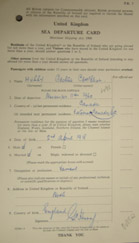
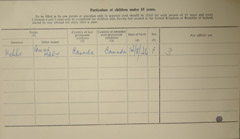 |
|
Digitisation was
followed by transcription of data from the images into a relational
Microsoft Access database. There are three tables: an index,
a
Ships’ Table and a Passengers’ Table. The
index lists
all the manifests that were digitised; the Ships’ Table gives
details of all the vessels included in the digitised images; and the
Passengers’ Table consists of personal and demographic
information on every passenger whose details have been transferred from
the digitised images to the database. Information has been
transcribed for 21,090 passengers, most of whom embarked at the port of
Glasgow in the first four months of 1923. All the tables are
linked, preventing the repeated duplication of information and enabling
complex queries to be undertaken. Data from the Access
database
was then transferred to a MySQL database for display on the web.




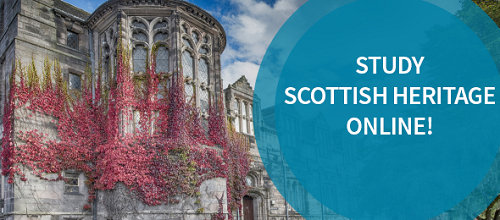 Learn more >
Learn more >